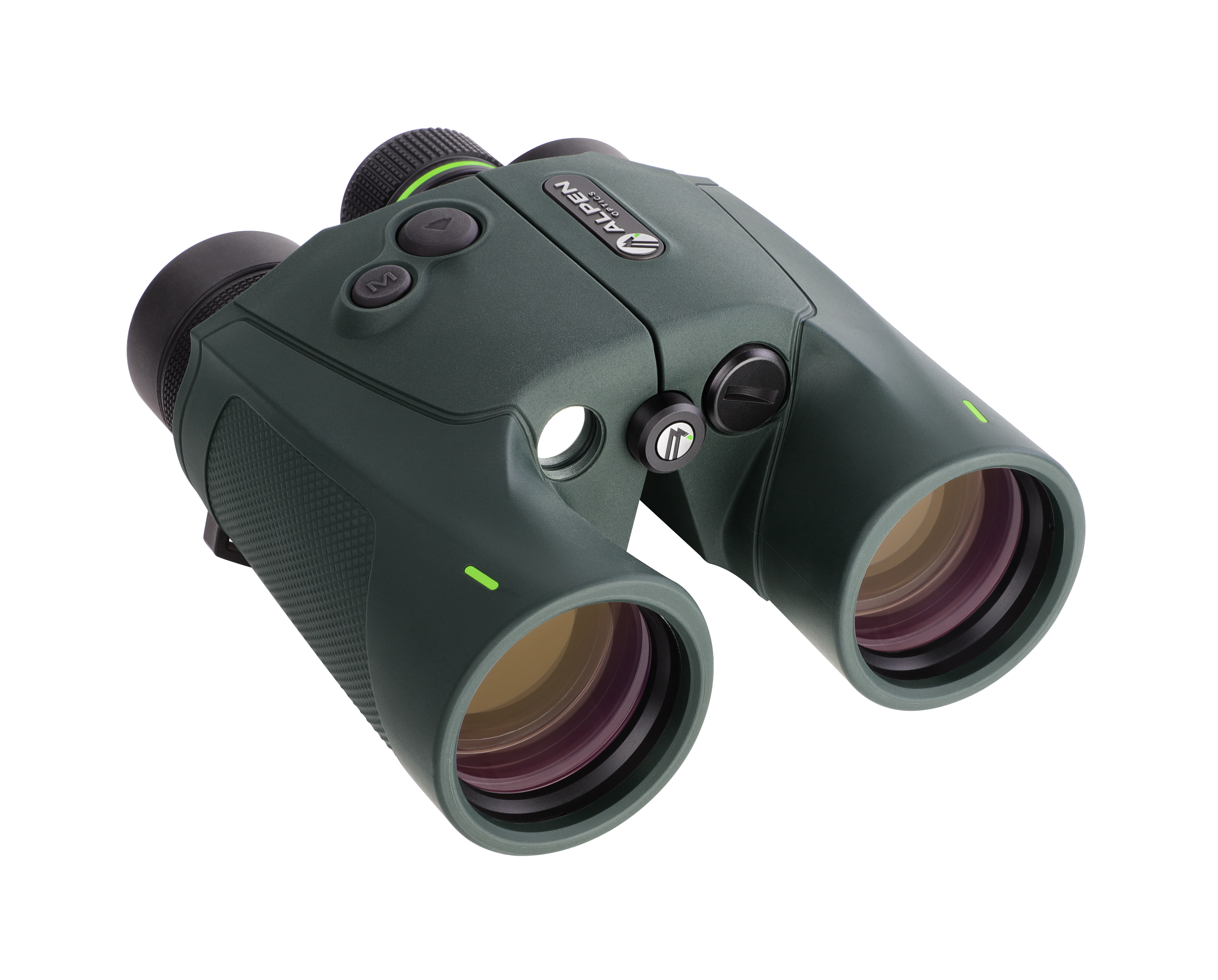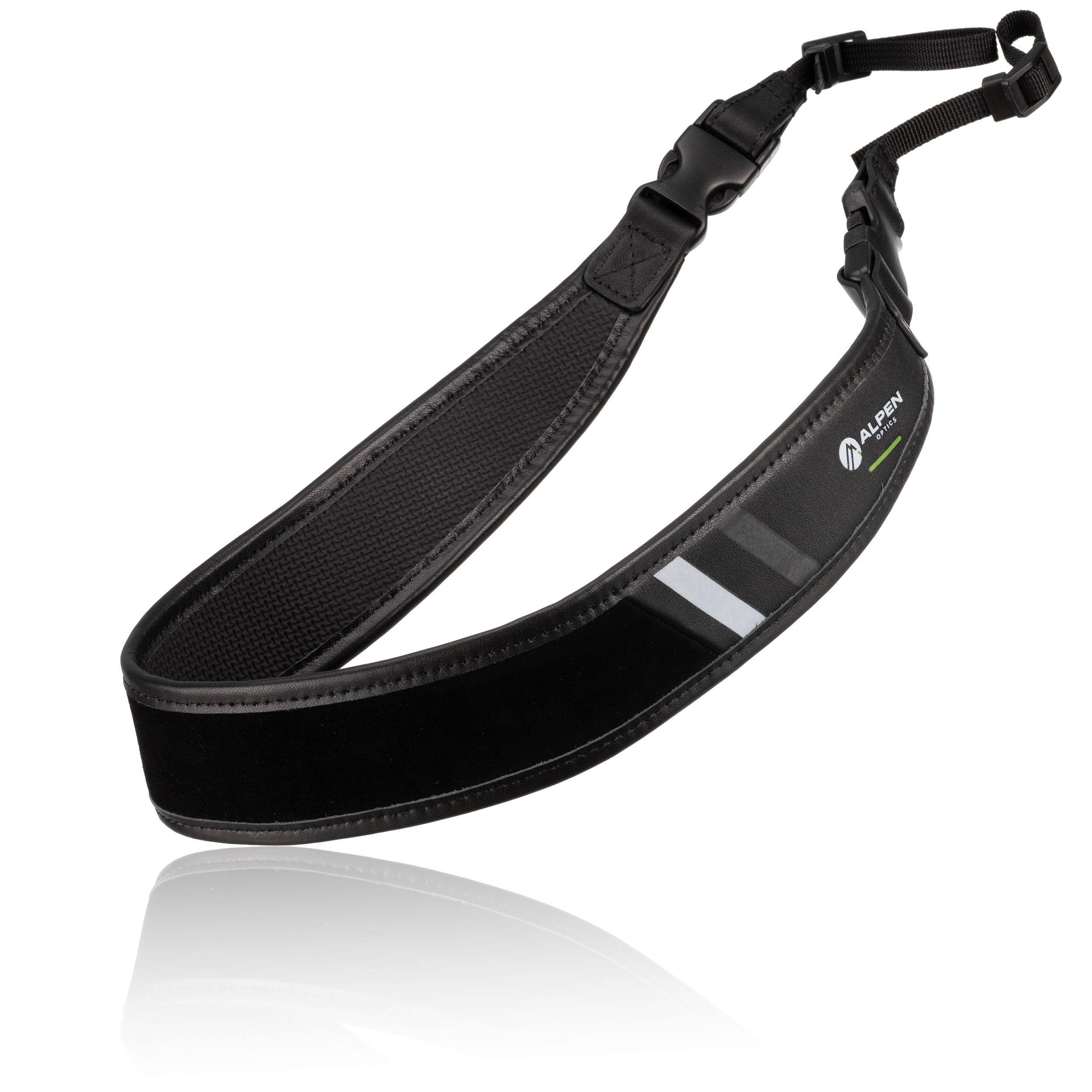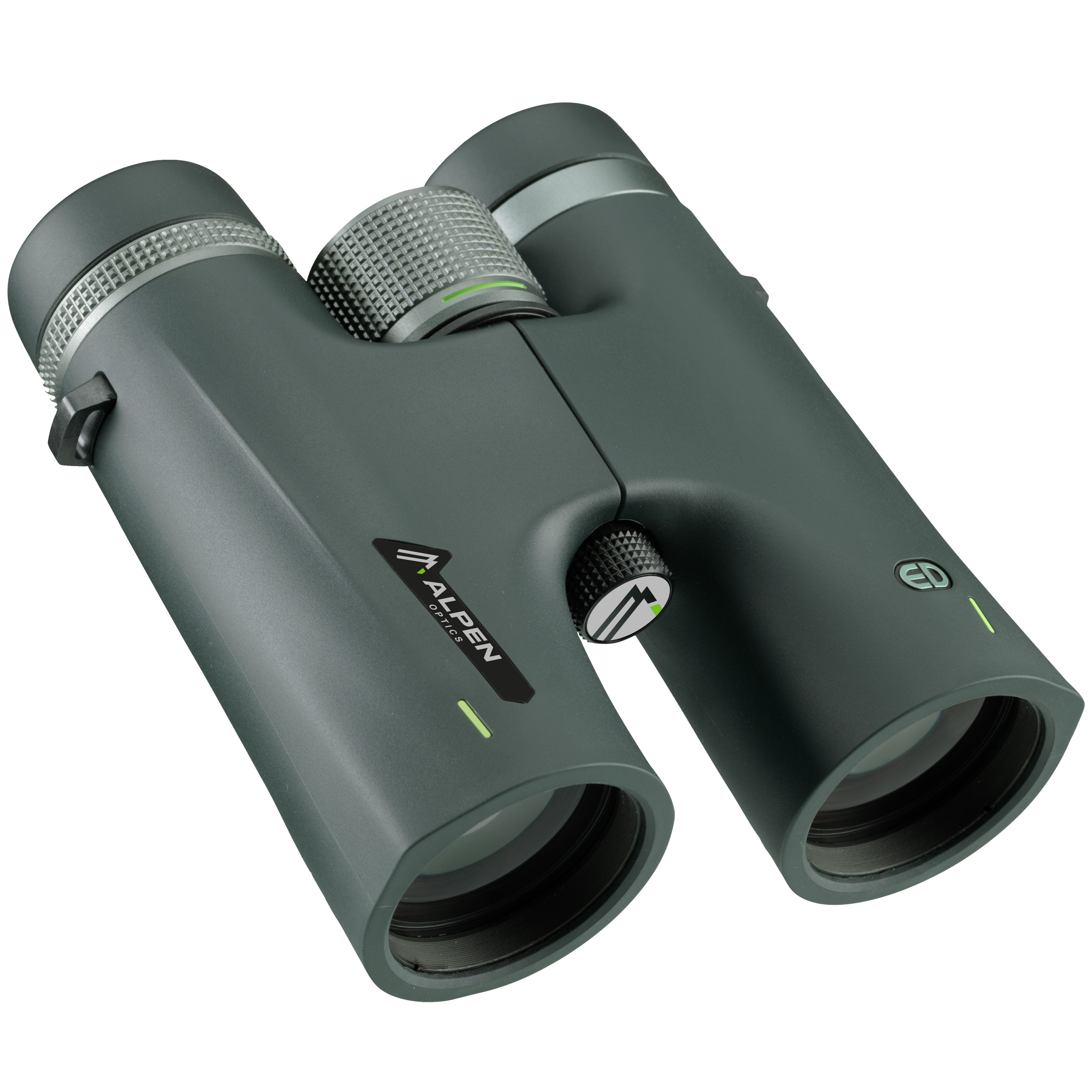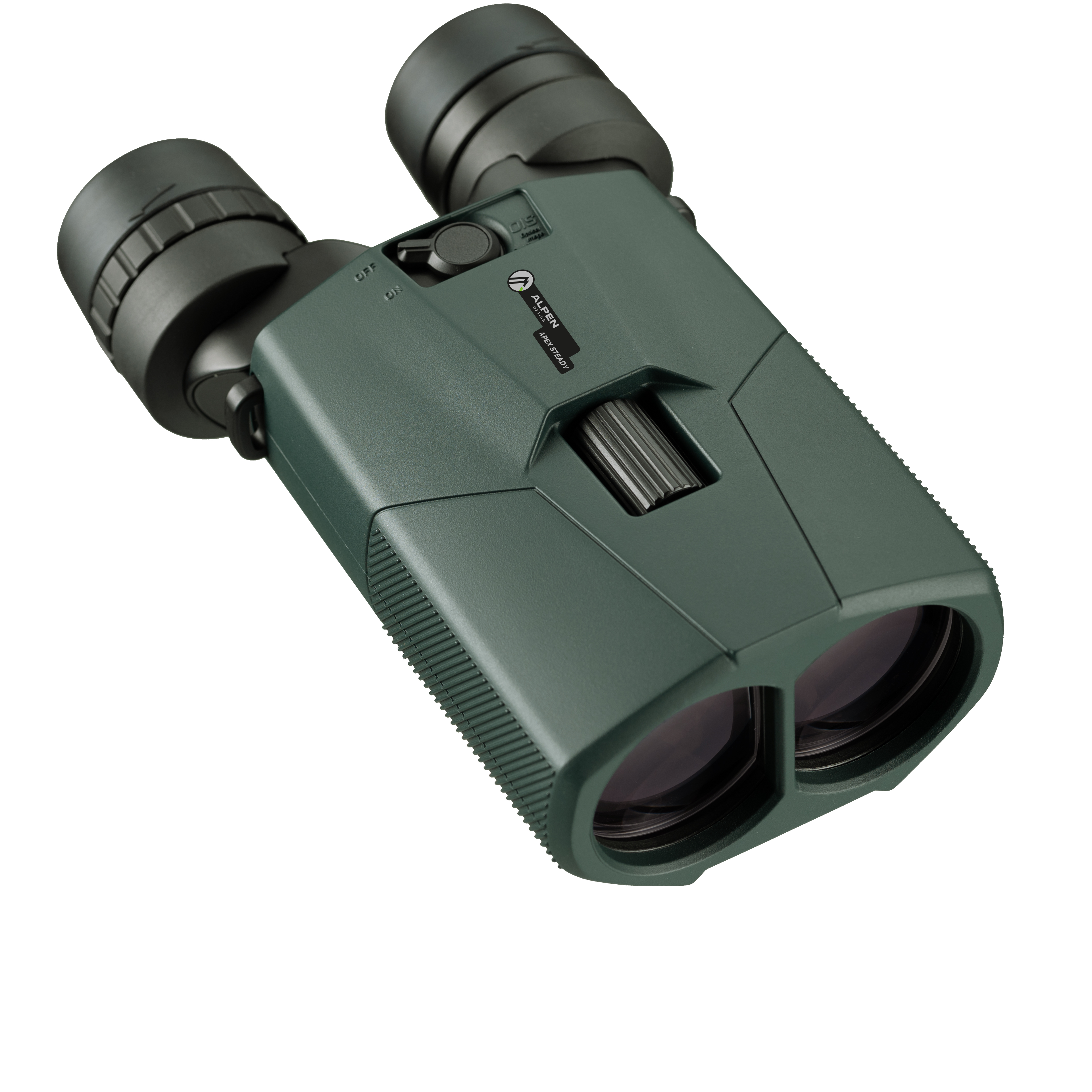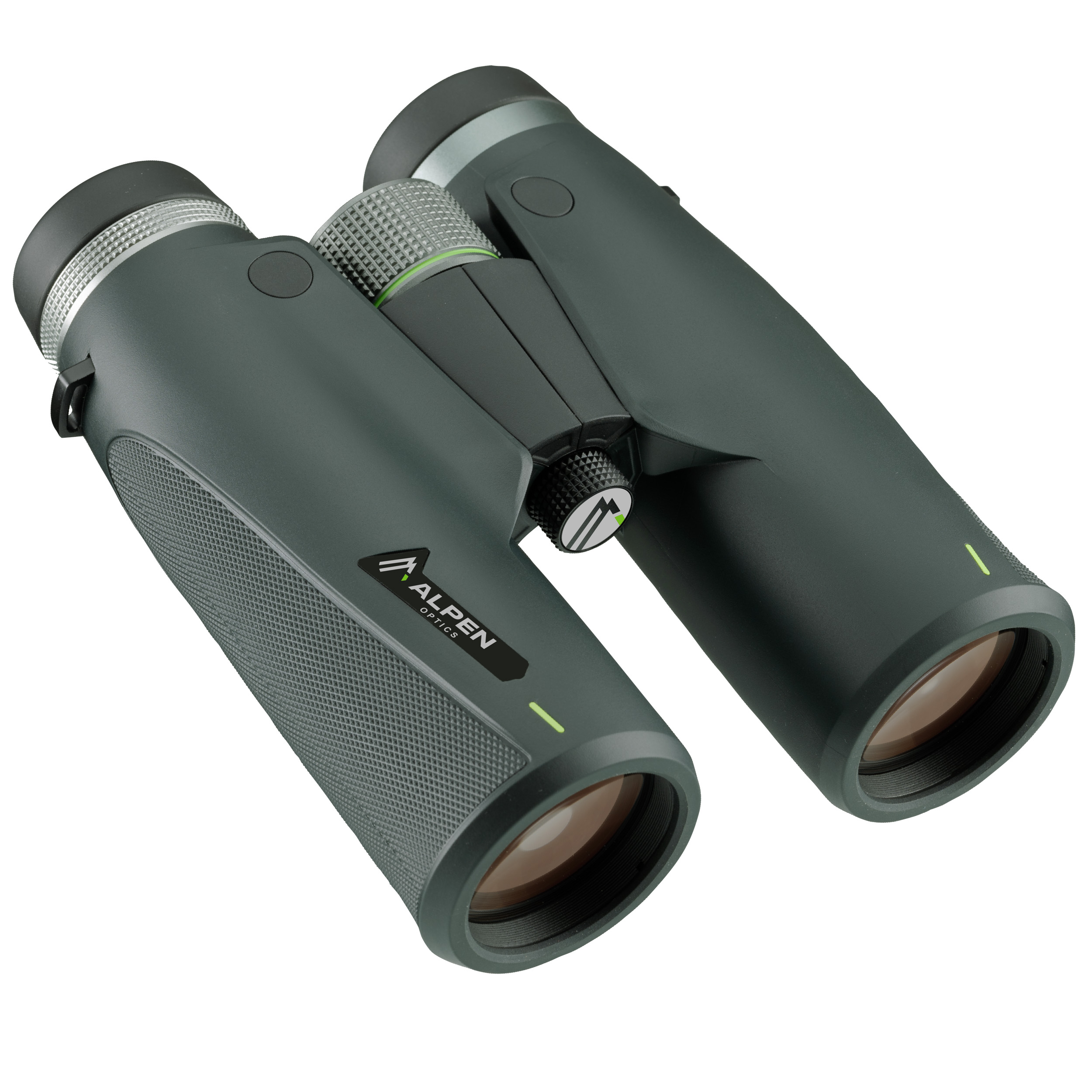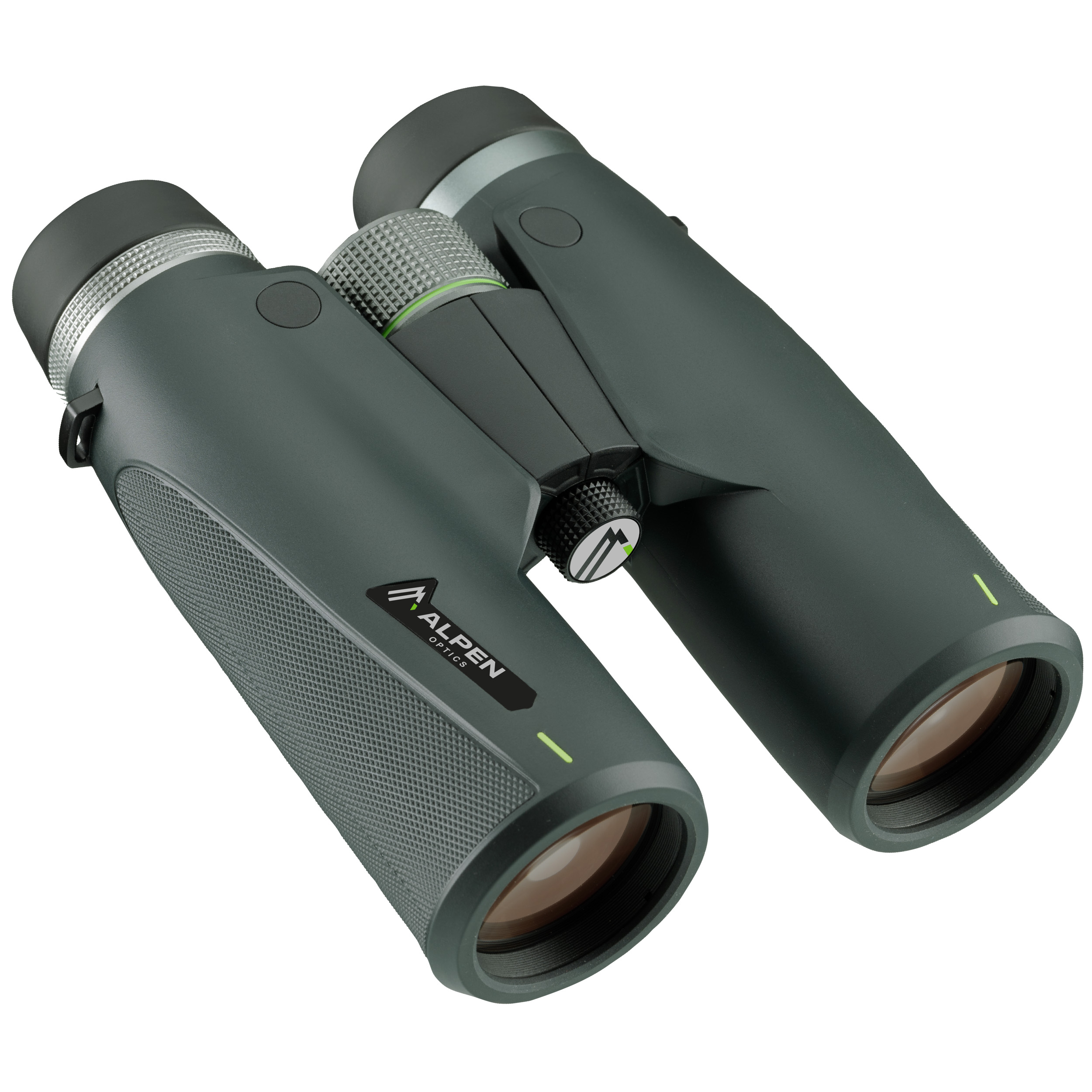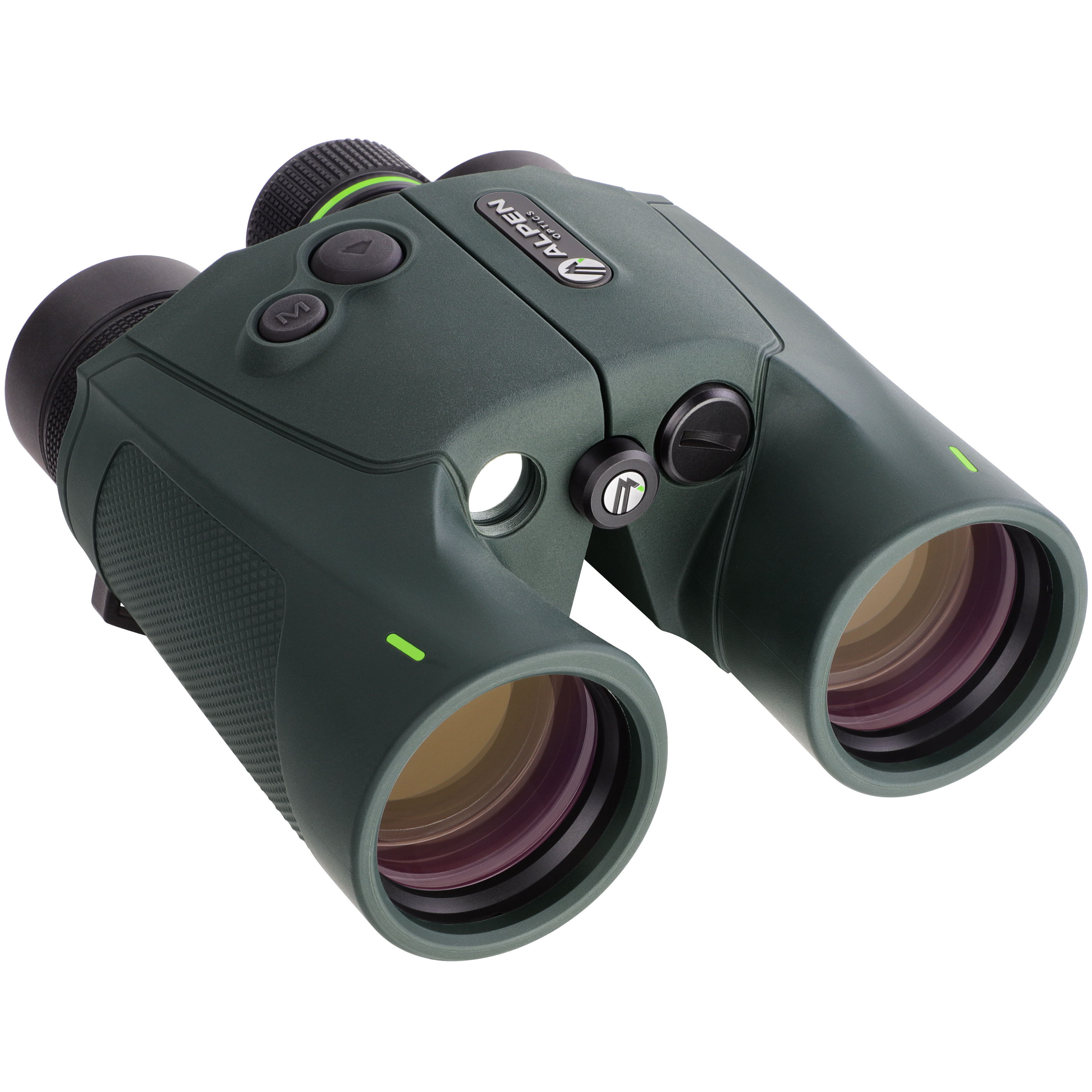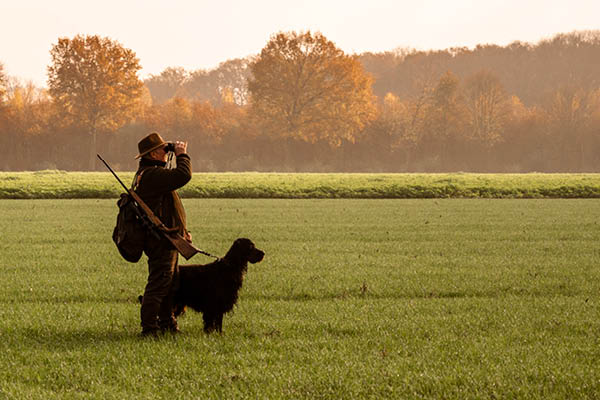
ALPEN OPTICS hunting binoculars – cutting-edge optics for hunting enthusiasts
Whether you’re still hunting, hunting in the mountains or sitting in a raised hide, a good pair of hunting binoculars is essential if you want to keep track of your target. A quality pair of binoculars is one of the most important pieces of gear for hunting enthusiasts – especially if you want something that is designed to last for many decades. That’s why we don’t make any compromises when designing and manufacturing our hunting optics.
Read on to find out why all ALPEN OPTICS hunting binoculars produce an outstanding image and how you can find the most suitable model for your hunting needs.

High-performance coatings in every layer
When you’re surrounded by nature, the lighting conditions are not always optimal. That’s why it’s important to ensure that your hunting binoculars capture as much light as possible. In order to achieve this goal, ALPEN OPTICS uses special coatings that increase the light transmission of the optics, guaranteeing a bright image even in adverse weather conditions.
PXA phase coating for high-contrast images
If you’re on the lookout for wild animals, you’ll want to see as much detail as possible. That’s why ALPEN OPTICS hunting binoculars come with a cutting-edge PXA phase coating, which produces high-resolution images with outstanding contrast.
UBX coating for brighter images
Many hunts take place at twilight. Our hunting binoculars feature a special ultra-bright coating that lets more light into your eyes in order to produce a brighter image – even in poor lighting conditions.
Exclusive ALPEN OPTICS technology: high-performance SHR coating
Our super high-reflection coating on the prism produces stunning images by transmitting the light better to your eyes, allowing you to view mesmerising up-close images of animals and nature.
Full multi-layer coating for optimal light transmission
In addition to the prisms, the lenses also come with a special coating to ensure that you always obtain the best possible image. Most ALPEN OPTICS hunting binoculars are equipped with fully multi-coated lenses.
Premium glass material
In addition to the coatings, the glass material used in the optics also plays a decisive role in determining the image quality, as the light has to pass through the glass before it reaches your eyes. That’s why ALPEN OPTICS binoculars are only made using the best types of glass.

Crystal-clear images with premium quality BaK-4 prisms
Compared to standard BK-7 glass, optical BaK-4 glass (barium crown glass) produces even sharper and brighter images. All ALPEN OPTICS hunting binoculars sold in Europe are made using cutting-edge BaK-4 glass.
ED glass lenses for detailed, true-colour images
ALPEN OPTICS hunting binoculars feature lenses made from ED glass in order to render wild animals, landscapes and more in stunning true-colour images. ED glass is a premium material that reduces scattered light and prevents colour fringing.
ALPEN OPTICS hunting binoculars – outstanding performance in all weather conditions
If you’re passionate about hunting, you need to be well equipped for rain, snow and other adverse weather conditions. That’s why ALPEN OPTICS binoculars deliver outstanding optical performance, whatever the weather.
Fogproof design
The temperature can change rapidly when you’re out in the wild. To prevent the lenses from fogging up, all ALPEN OPTICS hunting binoculars are filled with inert gas, guaranteeing you a crystal-clear view even in unpredictable weather conditions.
Waterproof housing
All ALPEN OPTICS binoculars come with a waterproof housing to protect the premium optics in damp weather conditions.
Lotus coating
ALPEN OPTICS binoculars feature an exclusive LPE lens coating, which was inspired by the lotus flower. All our hunting binocular models are treated with this special coating, which makes water drip off the lenses just like a lotus flower. The result: dirt is washed away automatically during rainy weather.
ALPEN OPTICS hunting binoculars – also suitable for glasses wearers
All our hunting binoculars come with twist-up eyecups as standard, which allow you to quickly adjust the distance between your eyes and the eyepiece lenses – perfect if you wear glasses. Thanks to the dioptre compensation, you can also adjust the eyepieces to account for differences in vision between your eyes. What’s more, some of ALPEN OPTICS’s high-end hunting binocular models are equipped with an A-lock dioptre system, which allows you to lock the dioptre setting in place.
How can I choose the best pair of hunting binoculars for my needs?
In addition to the quality of the optics, there are also other criteria to consider when choosing a pair of hunting binoculars. After all, it’s no use having the best high-end optics if the other specs don’t meet your needs. The following section contains a few tips on the most important factors to consider when purchasing a new pair of binoculars.
Magnification factor
One of the most important binocular specs is the magnification factor. This is typically stated in the model name together with the objective lens diameter (the second most important spec). These numbers are indicated as follows: Magnification factor x objective lens diameter. For example, the ALPEN OPTICS Apex XP 10x42 binoculars have a magnification of 10x and an objective lens diameter of 42 mm.
When choosing a pair of hunting binoculars, inexperienced hunters often opt for a large magnification factor in the hope of obtaining as much detail as possible. However, it’s important to consider the pros and cons of this strategy. Binoculars with a larger magnification factor have a smaller of field of view. These binoculars can be a good choice for hunting in open surroundings, but the field of view is likely to be too small for use in more concealed environments such as forests. A higher magnification factor also increases the amount of light which is lost. For example, a pair of 10x56 binoculars will produce a darker image than an 8x56 model with the same quality optics. This can be critical when hunting in twilight conditions. In addition, hunting binoculars with a lower magnification are typically easier to hold and therefore less prone to producing a shaky image.
Objective lens diameter
The objective lens diameter determines how much light the binoculars can capture: the larger the lenses, the brighter the image. This is particularly important in challenging light conditions, such as when hunting during twilight hours – in this case, the binoculars should have an objective lens diameter of at least 50 mm. However, if you possess a thermal imaging device for nighttime hunts, then a pair of 42 mm hunting binoculars with a premium lens coating is a good all-round option (binoculars with a higher objective lens diameter are also heavier).
Hunting binoculars for different hunting scenarios
Just like most purchases, it’s also important to consider the following question before deciding on a pair of hunting binoculars: what will I use them for? “For hunting” is too general an answer – hunting is a very varied activity, and different hunting scenarios require different types of gear. The following section provides a brief overview of the most common types of hunting:
Still hunting
Still hunting requires you to walk stealthily through the forest in pursuit of your target. A pair of lightweight and sturdy binoculars is particularly useful in these scenarios. In terms of the magnification factor, 8x magnification offers a large field of view while also ensuring that the binoculars are easy to hold. The objective lens diameter should not exceed 42 mm, otherwise the binoculars are likely to be too heavy.
Hide hunting
Hides allow you to observe wild animals for a period of several hours right up to twilight – either from the ground or a raised position. For these types of hunts, it’s important to choose a pair of binoculars with a magnification factor of at least 8x to render images in sufficient detail. In addition, the binoculars should also have an objective lens diameter of at least 50 mm to ensure that you obtain a bright image in twilight or low-light conditions. A larger objective lens diameter also makes the binoculars heavier, meaning they are easier to keep steady in your hands. For longer observation sessions, you can use a tripod for additional comfort.
Drive hunting
Drive hunts involve pushing animals out of cover with a group of hunters or hunting dogs. As speed is of the essence for these types of hunts, the hunting binoculars should be compact, sturdy and easy to use. Binoculars with a magnification factor of max. 8x and an objective lens diameter of up to 42 mm are ideal for these scenarios, as they provide a large field of view and won’t weigh you down.
Twilight factor
Most wild animals don’t emerge until dusk. For this reason, a good pair of hunting binoculars must also be able to render detailed images in low-light conditions. The twilight factor can help you to choose the right pair of binoculars for your needs – the higher the twilight factor, the more suitable the binoculars are for use in twilight conditions. However, the twilight factor is a purely mathematical value, and does not take other performance-enhancing features into account (such as special coatings). For this reason, it should only be used to compare hunting binoculars from the same series.
The twilight factor is calculated by taking the square root of the magnification factor x objective lens diameter. For example, for a pair of 8x42 hunting binoculars, the twilight factor is calculated as follows:
Square root of 8x magnification factor x 42 mm objective lens diameter = square root of 8 x 42 = 18.33.
Hunting binoculars with special features
Binoculars with special features can be particularly useful for hunting. For example, a built-in rangefinder allows you to determine the precise distance to your target. The result is displayed directly in the field of view, meaning there is no need to use a separate measuring device. This saves time and allows you to keep still to avoid attracting attention.
Some hunting binoculars also come with an image stabiliser, which is particularly useful when observing at high magnifications. With these binoculars, the image stays completely steady at a magnification factor of 14x and more when you hold the binoculars in your hand, allowing you to obtain detailed images at long ranges. Hunting binoculars with an image stabiliser are therefore very popular for mountain hunts or observing game in open surroundings.
From premium all-round hunting binoculars with a 42 mm objective lens diameter to binoculars with useful special features, ALPEN OPTICS offers an outstanding range of high-end hunting binoculars for experienced and beginner hunters.
ALPEN OPTICS binoculars for birdwatching and more
In addition to hunting, the high-performance binoculars from ALPEN OPTICS are also suitable for other applications such as observing animals and landscapes. For example, the high-end optics are ideal for birdwatching (a magnification factor of 8x or 10x is best for birdwatching, as well as an objective lens diameter of at least 42 mm to ensure that you can see the plumage in detail during twilight hours).
ALPEN OPTICS binoculars are also ideal for obtaining a closer view of the surrounding landscape during camping or hiking trips. And if you’re into stargazing, ALPEN OPTICS binoculars with a large objective lens diameter can be used to observe night sky objects such as the moon and star clusters.


